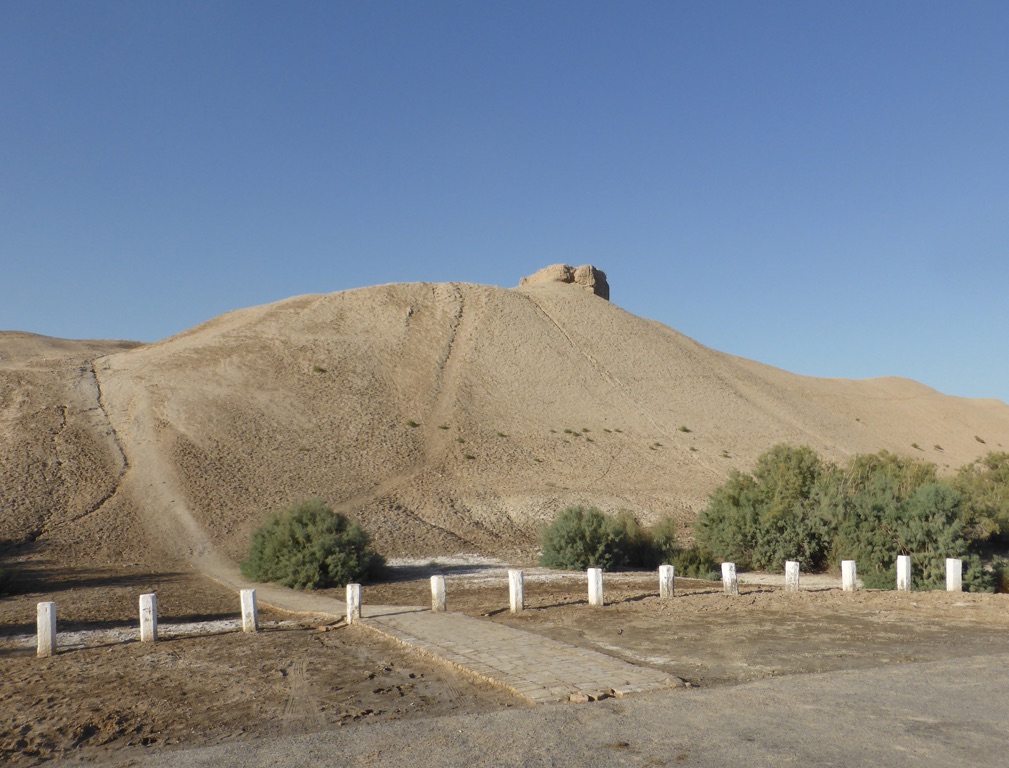Erk Kala, also known as the “Fortress of Alexander,” is an ancient archaeological site located in modern-day Turkmenistan. It is part of the larger site of Merv, which has been recognized by UNESCO as a World Heritage Site. Erk Kala dates back to the 6th century BC and is the oldest of the five main sites that make up the historical urban center of Merv. The site is a testament to the various cultures and empires that have influenced the region, including the Achaemenid Empire, the Hellenistic period, and later Islamic cultures.
Get your dose of History via Email
Historical Background of Erk Kala
Erk Kala was first discovered by modern archaeologists in the late 19th century. The site was excavated by a number of expeditions, revealing its historical significance. It was built by the Achaemenid Empire in the 6th century BC and served as a fortified administrative center. Over time, Erk Kala was inhabited by various groups, including the Greeks, who expanded the city during the Hellenistic period.
The city’s strategic location on the Silk Road contributed to its historical importance. It became a bustling hub of trade and culture. Erk Kala was also the scene of significant historical events, including the conquests by Alexander the Great and later by Muslim armies. These conquests led to cultural and architectural changes within the city.
Throughout its history, Erk Kala was continuously inhabited until it was eventually abandoned. The reasons for its abandonment are still a subject of research. However, it is known that the city’s decline coincided with the rise of the nearby city of Sultan Kala, which became the new center of the region.
Erk Kala’s ruins offer a glimpse into its past glory. The site includes remnants of walls, gates, and buildings that hint at its former grandeur. The city’s layout reflects the architectural and urban planning styles of its time, showcasing the influence of its various occupiers.
The site’s historical significance is recognized by scholars and is protected as part of the larger Merv oasis. Today, Erk Kala is an important location for archaeological research, providing insights into the region’s complex history and the many cultures that have left their mark on the landscape.
About Erk Kala
Erk Kala is characterized by its impressive mudbrick walls, which once stood as a formidable defensive structure. The site covers an area of approximately 12 hectares, with walls that reach up to 30 meters in height. The construction techniques used were typical of the Achaemenid period, with large bricks laid in regular patterns.
The city’s architecture includes the remains of residential and administrative buildings. These structures reflect the Hellenistic influence, particularly in the layout of the streets and the design of the buildings. The use of columns and intricate brickwork are notable features of the site.
One of the most significant architectural highlights of Erk Kala is the citadel. Located at the highest point of the site, the citadel served as a lookout and a last line of defense. It also housed important administrative functions and was likely the residence of the local governor.
Excavations have uncovered various artifacts, including pottery, tools, and coins. These findings provide valuable information about the daily life of the inhabitants and the economic activities that took place within the city.
Despite the harsh climate and the passage of time, Erk Kala has managed to preserve its essence. The site remains a testament to the ingenuity of ancient construction methods and the cultural significance of the region.
Theories and Interpretations
Several theories exist about the use and significance of Erk Kala. Some scholars suggest that it served as a royal citadel for the Achaemenid governors. Others believe it played a religious role, possibly housing a Zoroastrian fire temple.
The mysteries of Erk Kala are compounded by the lack of written records from the period. This has led archaeologists to rely on the physical evidence and comparative analysis with other contemporary sites to piece together its history.
Interpretations of the site have also been informed by historical accounts from later periods. These include descriptions by medieval travelers and historians who visited the ruins of Merv and recorded their observations.
Dating of the site has been carried out using various methods, including stratigraphy and radiocarbon dating. These techniques have helped establish a timeline for the occupation and development of Erk Kala.
Despite ongoing research, Erk Kala continues to hold secrets about its past. The site remains an active area of study for archaeologists seeking to understand the complexities of ancient urban life in Central Asia.
At a glance
Country; Turkmenistan
Civilization; Achaemenid Empire, Hellenistic, Islamic
Age; 6th century BC
Conclusion and Sources
Reputable sources used in the creation of this article include;
- UNESCO World Heritage Centre – https://whc.unesco.org/en/list/886
- Turkmenistan Government Website – https://turkmenistan.gov.tm/en/post/57930/erk-kala-oldest-fortress-merv

